
of-finite-jurisdiction
Finn OFJ’s space blog. Do you love space?? you better. or else
39 posts
Latest Posts by of-finite-jurisdiction

oh okay. heart steps right out of my chest and falls down the stairs
With NASA announcing their streaming service NASA+ and also announcing it’s going to be free and also ad free, I’d just like to appreciate the lengths they go to make scientific knowledge and exploration as available as they possibly can.

NGC 1365, Heart of the Galaxy

This peculiar portrait showcases NGC 1999, a reflection nebula in the constellation Orion. NGC 1999 is around 1,350 light-years from Earth and lies near the Orion Nebula, the closest region of massive star formation to Earth. NGC 1999 itself is a relic of recent star formation – it is composed of debris left over from the formation of a newborn star.
Credit: ESA/Hubble & NASA, ESO, K. Noll
SNOOPY IS BACK FROM THE MOON

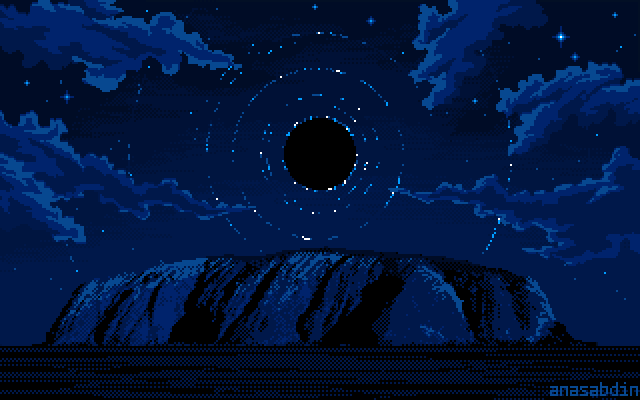
Uluru blackh●le rise, me, pixel art, 2022

Spiral Galaxy NGC 2841 : A mere 46 million light-years distant, spiral galaxy NGC 2841 can be found in the northern constellation of Ursa Major. This deep view of the gorgeous island universe was captured during 32 clear nights in November, December 2021 and January 2022. It shows off a striking yellow nucleus, galactic disk, and faint outer regions. Dust lanes, small star-forming regions, and young star clusters are embedded in the patchy, tightly wound spiral arms. In contrast, many other spirals exhibit grand, sweeping arms with large star-forming regions. NGC 2841 has a diameter of over 150,000 light-years, even larger than our own Milky Way. X-ray images suggest that resulting winds and stellar explosions create plumes of hot gas extending into a halo around NGC 2841. via NASA
how I sleep at night knowing there are stars and planets and galaxies above my roof

It wrinkles my brain that Jupiter’s moon Europa has oceans that are sixty miles deep, while Earth’s oceans only reach seven miles deep at most. I’m willing to bet good money that there’s life in Europa’s oceans. Like five bucks. You hear me, NASA? I bet you five bucks that there’s life on Europa… Now that there’s money and reputation on the line, I bet they send a mission there real quick.
Comparing the rotations of objects in the Solar System. Just look at them lol.✨🪐
To everyone that's confused, the planet Venus rotates very very slowly, with a single revolution taking about 243 Earth days, and Mercury rotates slowly, but not as slow as Venus.




Rings of Gas Giants
l Uranus (Chandra) l Neptune, Jupiter (Webb) l Saturn (Cassini)

Chamaeleon Dark Nebulas : Sometimes the dark dust of interstellar space has an angular elegance. Such is the case toward the far-south constellation of Chamaeleon. Normally too faint to see, dark dust is best known for blocking visible light from stars and galaxies behind it. In this four-hour exposure, however, the dust is seen mostly in light of its own, with its strong red and near-infrared colors giving creating a brown hue. Contrastingly blue, the bright star Beta Chamaeleontis is visible just to the right of center, with the dust that surrounds it preferentially reflecting blue light from its primarily blue-white color. All of the pictured stars and dust occur in our own Milky Way Galaxy with – but one notable exception: the white spot just below Beta Chamaeleontis is the galaxy IC 3104 which lies far in the distance. Interstellar dust is mostly created in the cool atmospheres of giant stars and dispersed into space by stellar light, stellar winds, and stellar explosions such as supernovas. via NASA
A Dusty Fingerprint in Space

A new image from NASA's James Webb Space Telescope reveals a remarkable cosmic sight: at least 17 concentric dust rings emanating from a pair of stars. Just 5,300 light-years from Earth, the star duo are collectively known as Wolf-Rayet 140. Each ring was created when the two stars came close together and their stellar winds (streams of gas they blow into space) collided so forcefully that some of the gas was compressed into dust. The stars' orbits bring them together about once every eight years, and forms a half-shell of dust that looks like a ring from our perspective. Like a cosmic fingerprint, the 17 rings reveal more than a century of stellar interactions—and the "fingerprint" belonging to Wolf-Rayet 140 may be equally unique. Other Wolf-Rayet stars produce dust, but no other pair are known to produce rings quite like Wolf-Rayet 140.
Learn more about Wolf-Rayet 140.
Make sure to follow us on Tumblr for your regular dose of space!


Neptune’s rings in infrared © JWST

Space Station Silhouette on the Moon : What’s that unusual spot on the Moon? It’s the International Space Station. Using precise timing, the Earth-orbiting space platform was photographed in front of a partially lit gibbous Moon last month. The featured composite, taken from Payson, Arizona, USA last month, was intricately composed by combining, in part, many 1/2000-second images from a video of the ISS crossing the Moon. A close inspection of this unusually crisp ISS silhouette will reveal the outlines of numerous solar panels and trusses. The bright crater Tycho is visible on the upper left, as well as comparatively rough, light colored terrain known as highlands, and relatively smooth, dark colored areas known as maria. On-line tools can tell you when the International Space Station will be visible from your area. via NASA
the new composite james webb image is so beautiful ive been staring at it for 10 minutes straight

featuring jupiters rings, europa (along with a bunch of other moons), the northern and southern auroras, and the great red spot
this is my space centered blog, sharing in case any of you guys like space too :^)
IS THE UNIVERSE INFINITE??
Blog# 187
Wednesday, April 27th, 2022
Welcome back,
It’s one of the most compelling questions you could possibly ask, one that humanity has been asking since basically the beginning of time: What’s beyond the known limits? What’s past the edge of our maps? The ultimate version of this question is, What lies outside the boundary of the universe?
The answer is — well, it’s complicated.

To answer the question of what’s outside the universe, we first need to define exactly what we mean by “universe.” If you take it to mean literally all the things that could possibly exist in all of space and time, then there can’t be anything outside the universe. Even if you imagine the universe to have some finite size, and you imagine something outside that volume, then whatever is outside also has to be included in the universe.
Even if the universe is a formless, shapeless, nameless void of absolutely nothing, that’s still a thing and is counted on the list of “all the things” — and, hence, is, by definition, a part of the universe.

If the universe is infinite in size, you don’t really need to worry about this conundrum. The universe, being all there is, is infinitely big and has no edge, so there’s no outside to even talk about.
Oh, sure, there’s an outside to our observable patch of the universe. The cosmos is only so old, and light only travels so fast. So, in the history of the universe, we haven’t received light from every single galaxy. The current width of the observable universe is about 90 billion light-years. And presumably, beyond that boundary, there’s a bunch of other random stars and galaxies.
But past that? It’s hard to tell.

Cosmologists aren’t sure if the universe is infinitely big or just extremely large. To measure the universe, astronomers instead look at its curvature. The geometric curve on large scales of the universe tells us about its overall shape. If the universe is perfectly geometrically flat, then it can be infinite. If it’s curved, like Earth's surface, then it has finite volume.
Current observations and measurements of the curvature of the universe indicate that it is almost perfectly flat. You might think this means the universe is infinite. But it’s not that simple. Even in the case of a flat universe, the cosmos doesn’t have to be infinitely big. Take, for example, the surface of a cylinder.

It is geometrically flat, because parallel lines drawn on the surface remain parallel (that’s one of the definitions of “flatness”), and yet it has a finite size. The same could be true of the universe: It could be completely flat yet closed in on itself.
But even if the universe is finite, it doesn’t necessarily mean there is an edge or an outside. It could be that our three-dimensional universe is embedded in some larger, multidimensional construct. That’s perfectly fine and is indeed a part of some exotic models of physics. But currently, we have no way of testing that, and it doesn’t really affect the day-to-day operations of the cosmos.

And I know this is extremely headache-inducing, but even if the universe has a finite volume, it doesn't have to be embedded.
When you imagine the universe, you might think of a giant ball that’s filled with stars, galaxies and all sorts of interesting astrophysical objects. You may imagine how it looks from the outside, like an astronaut views Earth from a serene orbit above.
But the universe doesn’t need that outside perspective in order to exist. The universe simply is. It is entirely mathematically self-consistent to define a three-dimensional universe without requiring an outside to that universe. When you imagine the universe as a ball floating in the middle of nothing, you’re playing a mental trick on yourself that the mathematics does not require.

Granted, it sounds impossible for there to be a finite universe that has nothing outside it. And not even “nothing” in the sense of an empty void — completely and totally mathematically undefined. In fact, asking “What’s outside the universe?” is like asking “What sound does the color purple make?” It’s a nonsense question, because you’re trying to combine two unrelated concepts.
It could very well be that our universe does indeed have an “outside.” But again, this doesn’t have to be the case. There’s nothing in mathematics that describes the universe that demands an outside.
If all this sounds complicated and confusing, don’t worry. The entire point of developing sophisticated mathematics is to have tools that give us the ability to grapple with concepts beyond what we can imagine. And that’s one of the powers of modern cosmology: It allows us to study the unimaginable.
Originally published on https://www.space.com
COMING UP!!
(Saturday, April 30th, 2022)
“WHAT IS THE ELECTRON CLOUD THEORY??”










“Black Hole,” poem assembled from quotations from Wikipedia articles
The misconception that there is no sound in space originates because most space is a ~vacuum, providing no way for sound waves to travel. A galaxy cluster has so much gas that we've picked up actual sound. Here it's amplified, and mixed with other data, to hear a black hole!

![Screenshot from nebula Wikipedia page: The "Pillars of Creation" from the Eagle Nebula. Evidence from the Spitzer Space Telescope suggests that the pillars may already have been destroyed by a supernova explosion, but the light showing us the destruction will not reach the Earth for another millennium.[1]](https://64.media.tumblr.com/b10fae13b89258a4bbd4b2cd7cf10646/939e648398194b92-95/s500x750/dd77cb9b6f24b0eaca6ca04b691a327c71641d09.jpg)
btw . insane little wikipedia caption for everyone’s consideration also






Stephan’s Quintet/ Carina/ Southern Ring © JWST
Why is this heat so hot 😩
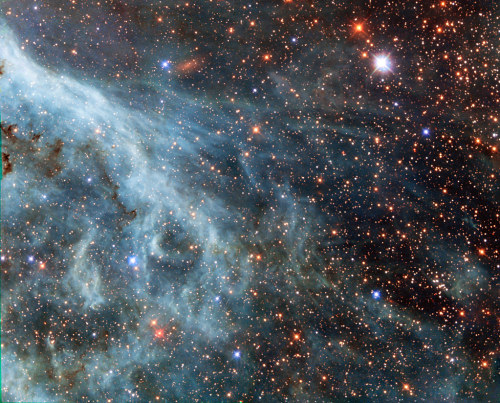
Turquoise Plumes in the Large Magellanic Cloud by NASA’s Marshall Space Flight Center

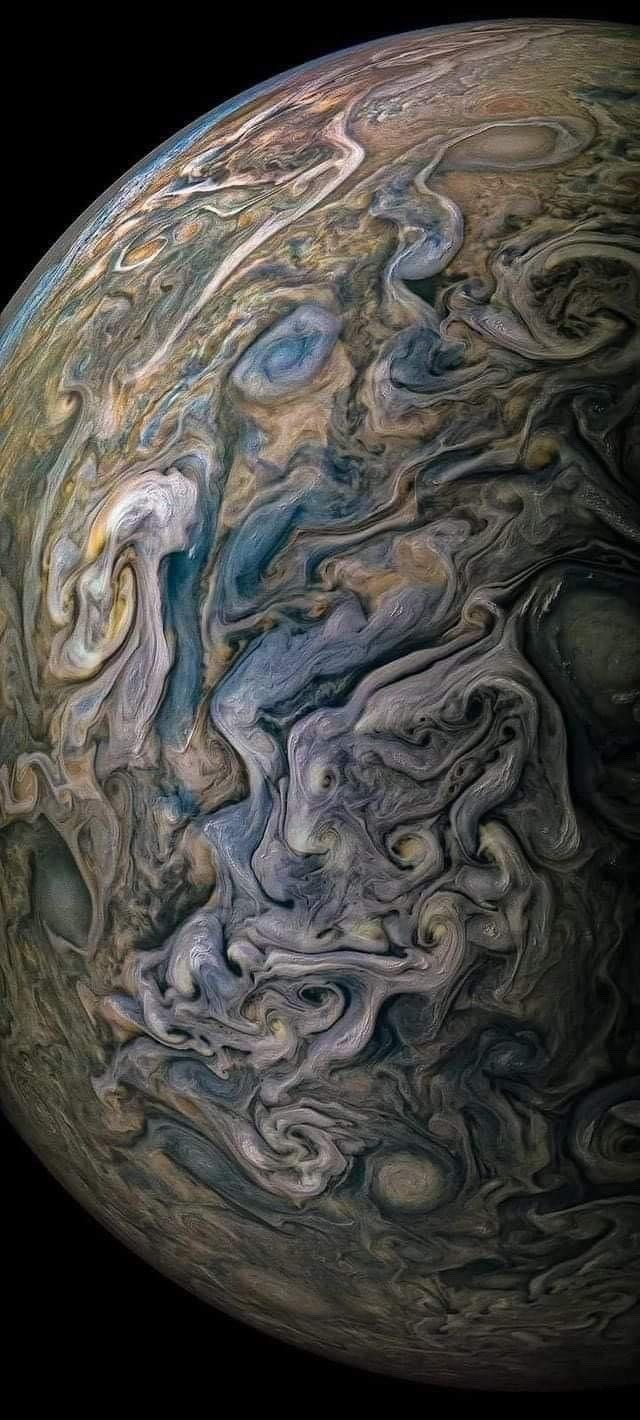



The Clearest Images of Jupiter ever taken
These beautifully real images are some of the closest images of Jupiter. Jupiter is the fifth planet from the Sun and the largest in the Solar System. It is a gas giant with a mass more than two and a half times that of all the other planets in the Solar System combined, but slightly less than one-thousandth the mass of the Sun. The original image was captured by JunoCam, the camera on NASA's Juno mission in orbit around Jupiter. This image was taken on Juno's 22nd close pass by Jupiter on Sept. 12, 2019 with image processing done by Prateek.
📸: NASA's Juno Space Probe / JunoCam
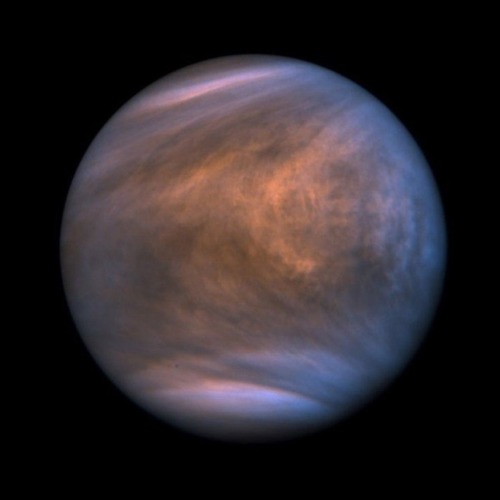

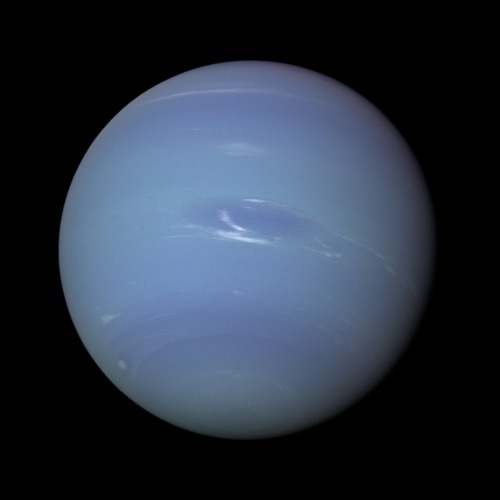
Venus, Callisto (Jupiter’s moon), Neptune
Don't talk to me right now I'm thinking of the new Jupiter photos and Vincent Van Gogh:








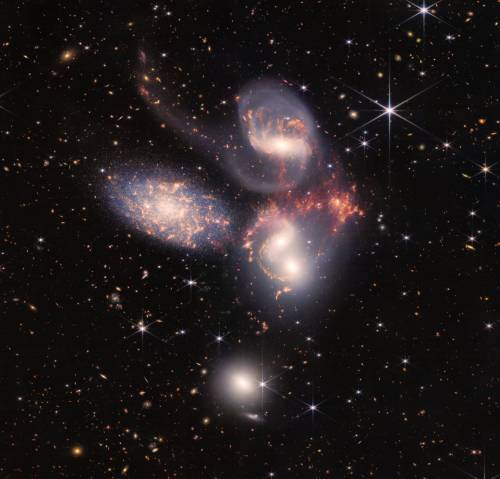
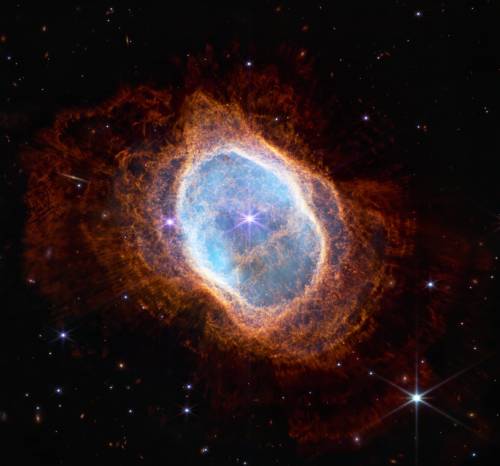
NASA’s Webb Space Telescope Reveals Astounding, Unprecedented Views of the Universe


